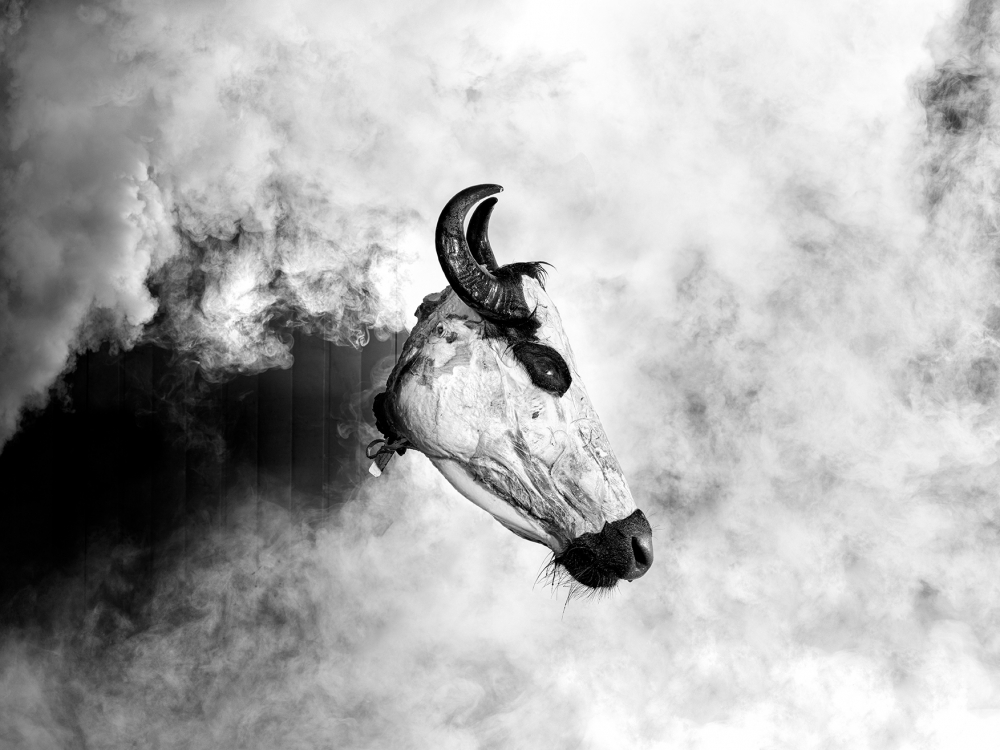Fine Art: Honorable Mention 2019 (professional)
ENTRY DESCRIPTION
Over the centuries, sacrifices (Sacred Remains) were offered to solicit semantic beyond objectivity. One of the sacrifices in Persian's mythology, which is rooted in Indo-European and West Asian mythologies, is an ox killing (Tauroktonos).
Ox has a great character in Indo-European culture. It’s the focal of life's upheavals. Times of the day were divided in early pasturing, yoking, and unyoking oxen. Even the water holes were measured based on the ox's hooves sizes. The relation between moon and ox in the ancient culture of primitives, in particular in Indo-European culture is very impressive. For the ancient human, the moon is the first phenomenon that dies and resurrects. As the crescent and the harvest moon are cycled phenomenon, the death of man is also not inevitable. The ox’s horn and crescent have visual communication, which has caused many imaginations in the Paleolithic images.
The ox has a pivotal place; as the fifth creature of ‘Ohrmazd’ (God), on behalf of beneficial creatures, and also as the most important quadrupeds in the history of Iran’s plateau (according to the Avesta —the sacred book of ancient Iran (Zoroasterianism)— and Pahlavi traditions). ‘Sacred Remains photo collection’ based on ox's myth in Iranian culture, its symbolic meanings and modern perceptions is developed.
AUTHOR
Omid Mohkami. 1978. Shiraz, Iran
- FineArt Photographer
- Photography of Musuem Objects & Artworks | Since 2006 Until Now
- Art Director of Elmi-Farhangi Publishing | Special Project Department |
Since 2014 Until Now
- Art Director | Project of Republishing Musuem‘s Exquisite Manuscripts (more than 40) |
Since 2008 Until Now
back to gallery
